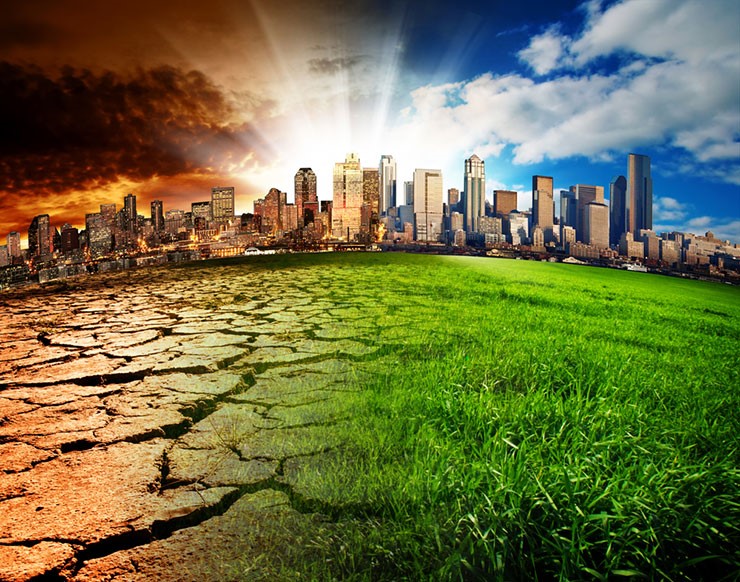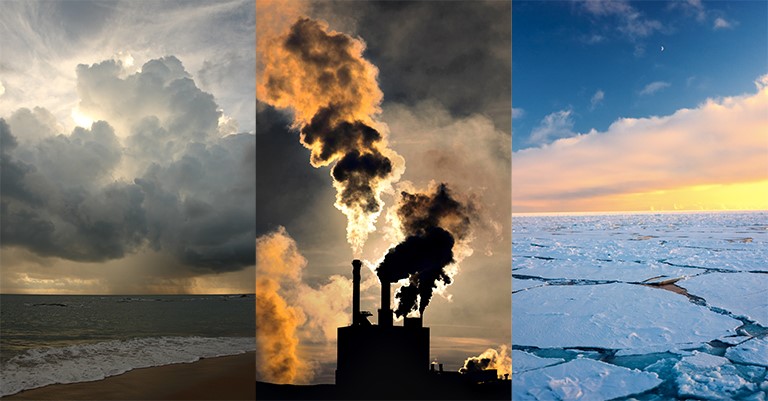
Oct. 31, 2018, 2:01 p.m.
CLIMATE CHANGE AND THE EU
It is not accidental that settlement areas, in general, have been on the edges of water resources throughout history. Water resources are an important phenomenon for the survival of human beings. Water resources have been important in terms of both consumption and transportation.
For this reason, the settlement and activity areas of mankind are concentrated in coastal cities. Water is vital.
The first thing that comes to mind when it comes to climate change is the melting of glaciers with the increase of potential heat energy of terrestrial and oceans. The melting of the glaciers has become the biggest problem threatening the existence of human beings in coastal cities.
Climate change scenarios are that the effects of an increase of 1.5 C and above for the world will be destructive.
Understanding climate change in terms of continuous warming will be a weakness in terms of subject matter. Along with climate change, the locations of cold and warm climate areas will change, which will lead to major changes in the settlement of people relative to existing climate zones.
In short, what is the cause of climate change that threatens the future of human beings? There is only one answer. The consumption of human beings. As a result of the current consumption concept, the release of greenhouse gases is greater than the amount that nature can handle.
This issue has come before the world public opinion as a result of scientific scenarios This issue has come before the world public opinion as a result of scientific scenarios. With the increase in public awareness, studies on the measures that can be taken have started and the Kyoto Protocol first came into the agenda with the signature of 155 states.
Details for Kyoto Protocol: https://unfccc.int/process/the-kyoto-protocol
It has been seen that the greatest damage in the climate change scenarios will take place in Europe and then in Asia, which has increased the activies of the European Union on the issue. In the first step, the Paris Agreement was signed one step ahead of the Kyoto Protocol.
In the context of the European Union's sensitivity to the issue, the Paris Agreement can be examined as to how far it carries its own members, according to the Kyoto Protocol.
Details for Paris Agreement: https://unfccc.int/process-and-meetings/the-paris-agreement/the-paris-agreement
European Union long-term goals are ;
By 2050, the EU aims to cut its emissions substantially – by 80-95% compared to 1990 levels as part of the efforts required by developed countries as a group.
Turning Europe into a highly energy efficient and low-carbon economy will also boost the economy, create jobs and strengthen Europe's competitiveness.
with these regulations ;
The EU's emissions trading system is the key tool for reducing greenhouse gas emissions from the industry at the lowest cost.
EU countries are required to support renewable energy sources such as wind, solar and biomass to reach green energy targets.
EU countries have to reduce the energy use of their buildings and industries are required to improve the energy efficiency of a wide array of equipment and household appliances.
Car manufacturers have to reduce CO2 emissions from new cars and vans.
Source: https://ec.europa.eu/clima/citizens/eu_en#tab-0-0
EU continues to fight climate change with climate action plans at the local level.
Turkey is also the partnership of this plans.. See also: https://www.avrupa.info.tr/tr/iklim-eylem-haftasi-2018
In the last part of our article, we want to draw attention to our individual measures. You can take individual measures to prevent climate change by taking these measures.
• Get a long-term shopping bag. Turn down the plastic bags given on each purchase and carry them in your own shopping bag.
• For products that require small packaging (liquid soap, cologne, etc.), choose the ones that can be filled. In this way, you contribute to both your home economy and reduce the amount of waste.
• Replace bulbs with energy-efficient light bulbs. This will prevent the release of 20 kg of carbon dioxide gas into the atmosphere per year.
• Relocate your refrigerator and freezer.
• Use less hot water. Keep in mind that warm water heating above 45-50 degrees will result in unnecessary energy consumption.
• When cooking, keep the lid of your pan closed while boiling water. This way you can save a significant amount of gas. When you use a pressure cooker, you can save up to 70%!
• Heat only as much water as you need when heating water with a kettle or kettle.
• Use a shower instead of bathing. So you spend only 70 litres of water instead of 200 litres.
• Close your door and window spacing with suitable materials. You can reduce your fuel costs by 30% by preventing air leaks in your building.
• Keep your air conditioner well and keep its filter clean. The clean air conditioner filter can prevent the production of up to 160 kg of carbon dioxide per year.
• Use solar energy. Solar energy can provide an important part of your hot water needs.
• Reduce the amount of time you are driving by choosing as far as possible walking, cycling or public transport.
• Have your vehicle serviced in a timely manner? If only 1% of the motor vehicle owners make regular vehicle maintenance, the production of more than 450 thousand tons of carbon dioxide per year can be prevented.
• Check the tires of your vehicles once a week and make sure they are properly blown. The proper tire pressure increases the distance you get from a tank with fuel up to 3%. Every 4 litres of petrol saved means 10 kg of carbon dioxide.

Source: https://climate.nasa.gov/resources/global-warming/
Cover photo: https://climate.nasa.gov/solutions/adaptation-mitigation/

